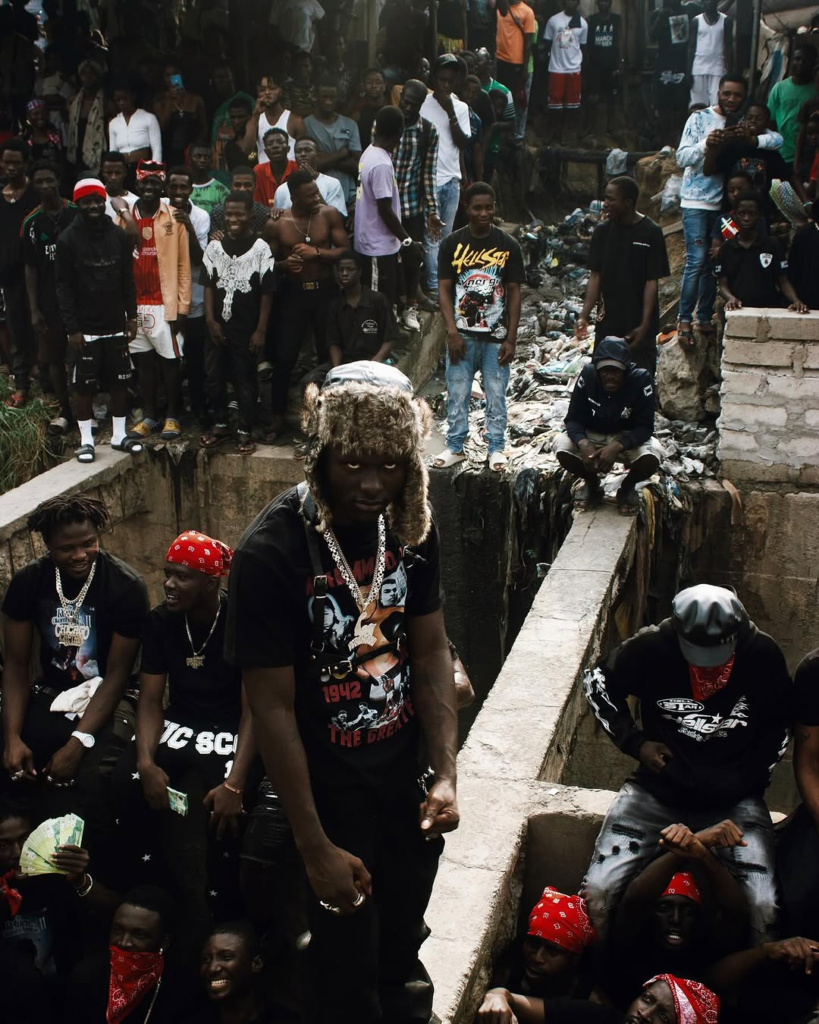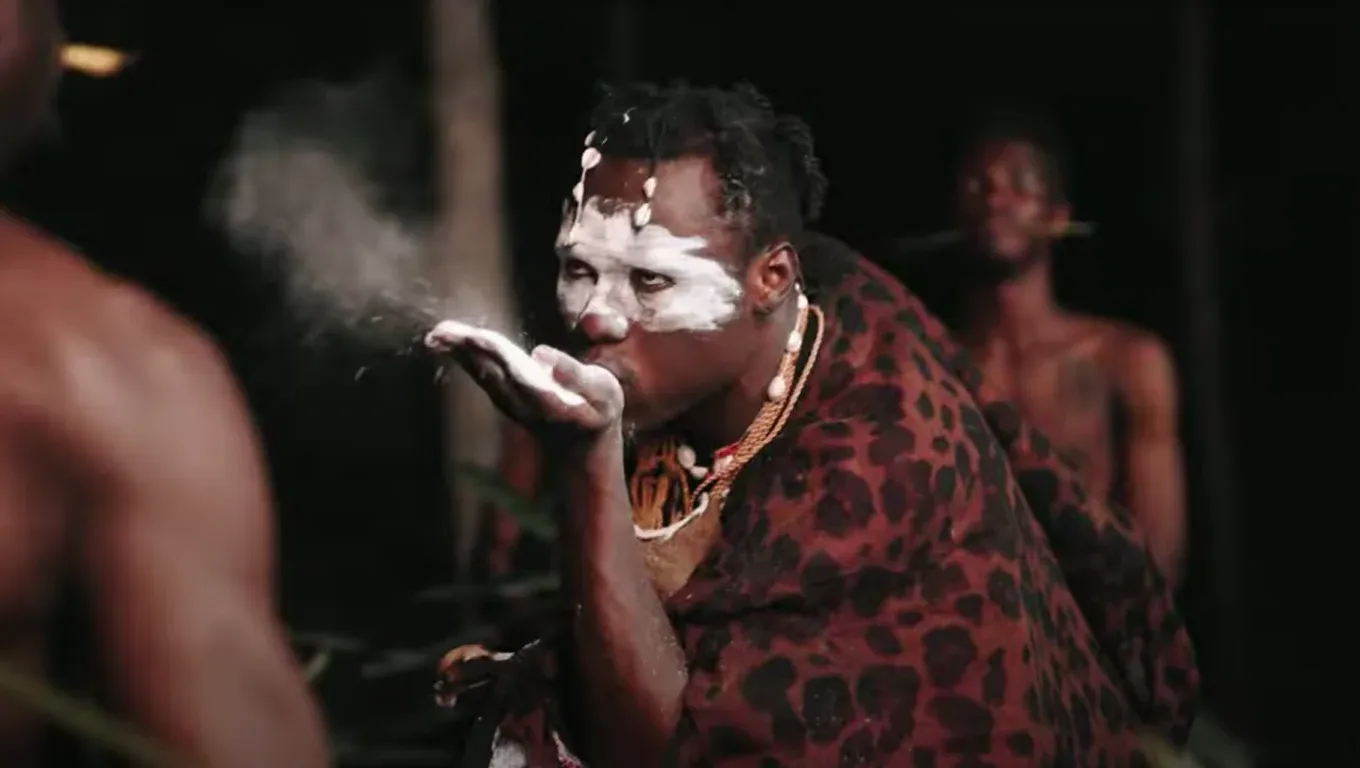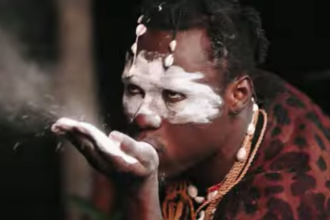Jay Bahd, one of the pioneers of the Asakaa movement, intertwines history with modern-day struggles in the second instalment of his debut album, “Return of Okomfo Anokye.” In “The Return of Okomfo Anokye II,” he gestures himself as a true leader in Ghanaian drill while drawing parallels to the legendary Okomfo Anokye—a mystic, lawgiver, and warrior-priest of the Ashanti Empire.
Okomfo Anokye’s legacy looms large over Ghanaian cultural identity. He is the legendary priest who summoned the golden stool from the heavens, codified the Ashanti constitution, and promised to return with “the key to death.” By adopting this powerful historical mantle, Jay Bahd signals his reverence for tradition and his ambition to forge something equally enduring within Ghana’s contemporary music.
The album opens with “Okomfo Anokye“, a hiplife-infused track that immediately establishes Jay Bahd’s dual positioning as both messiah and warrior. It’s a fierce address to enemies that sets the confrontational tone that weaves throughout the project.

This duality becomes more explicit on “Owuo Safoa” (Key to Death), where Jay Bahd fully embraces his Asakaa roots while wielding ancestral imagery as lyrical ammunition, warning potential challengers of their artistic demise should they dare to cross him.
What stands out across the sixteen tracks is Jay Bahd’s commitment to the Asakaa movement he helped pioneer while simultaneously honouring hiplife, the genre that preceded it. This cultural bridge-building creates richness to tracks like “Ya Fe,” where his bilingual wordplay between Twi and pidgin demonstrates a linguistic dexterity often overlooked in drill music’s typical focus on aggressive delivery.
The production skillfully balances the cold, sparse elements of drill with hip-hop and traditional hiplife influences, creating a sound that feels simultaneously rooted and forward-looking. “12 am,” featuring SkyFace SDW, exemplifies this fusion. He captures the late-night rituals of Ghanaian youth culture while maintaining the hard-edged production values that define the Asakaa movement.

Youth in Transition
Beyond the confrontational stance and cultural reclamation, “The Return of Okomfo Anokye II” serves as a document of Ghanaian youth consciousness. “Gidigidi” articulates the impatience of a generation hungry for immediate success against mounting pressures from family, relationships, and even religious obligations. This theme continues on “Welcome to the Streets,” which paints the urban landscape as a no-man’s-land requiring resilience and unity to navigate.
When Jay Bahd brings in fellow Asakaa members like SkyFace SDW and the group’s “cousins”, Deezy, Concept 47, and Vacs, these collaborative tracks strengthen the movement’s communal aspect. While he may position himself as a singular messianic figure, he remains tethered to the collective that helps push the sound narrative.
Owuo Safoa Official Video
Structural Imbalance
Despite its ambitious thematic framework and cultural significance, the album suffers from structural bloat. While the first half of the album is cohesive and powerful, the latter half slightly loses momentum. Some tracks feel like extensions of already-established themes, making the album’s 16-track length seem unnecessary. A tighter 12-track project could have maximized impact while trimming the excess.
Cultural Legacy in Real Time
Despite its minor redundancies, “The Return of Okomfo Anokye II” is a crucial addition to Ghanaian drill’s continued evolution. Jay Bahd’s ability to maintain his Asakaa roots while embracing hiplife influences ensures the sound remains grounded in Ghanaian identity.
By infusing Asakaa with historical reverence while maintaining its street-level immediacy, Jay Bahd has created an expansive effort that, despite its structural flaws, stands as an important cultural artifact. When he declares himself a messiah for Ghana’s music space, it doesn’t come across as mere bravado but as a serious commitment to cultural preservation through innovation.
































